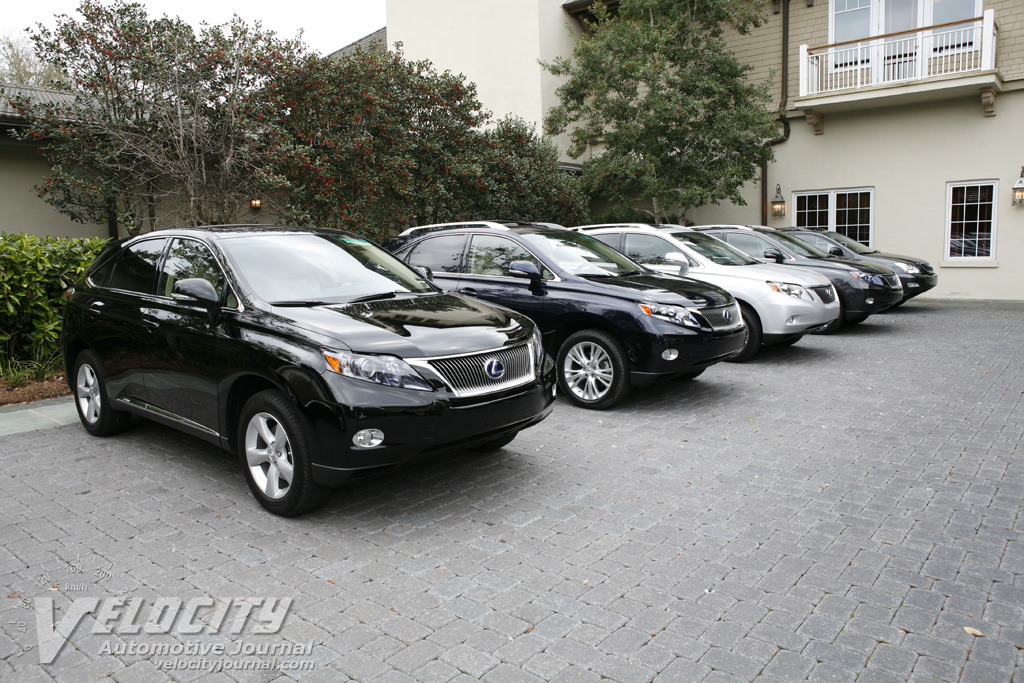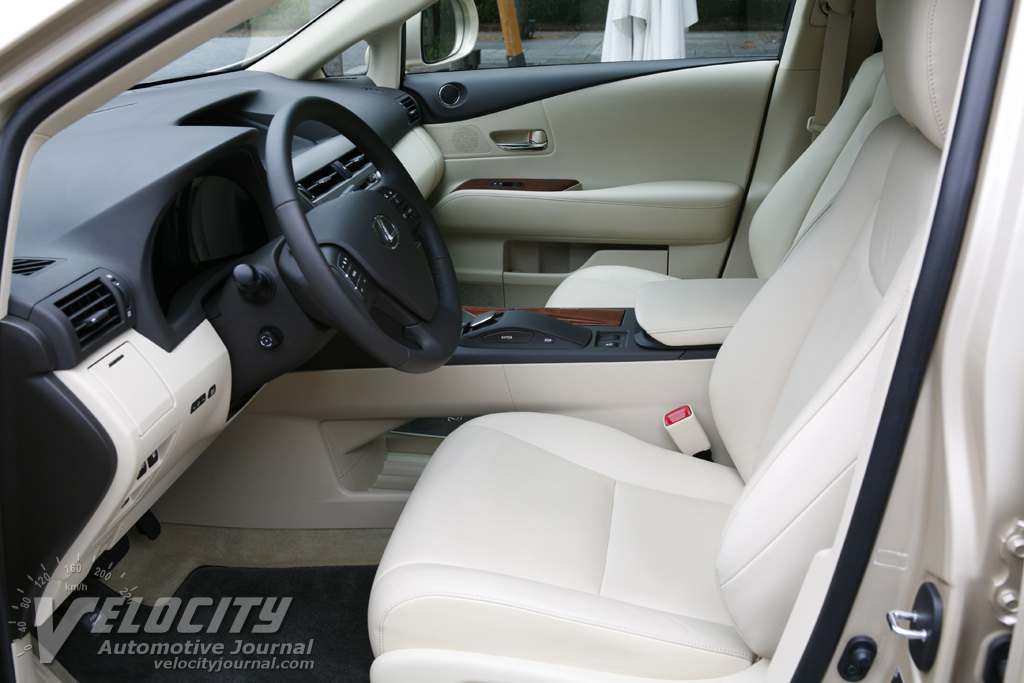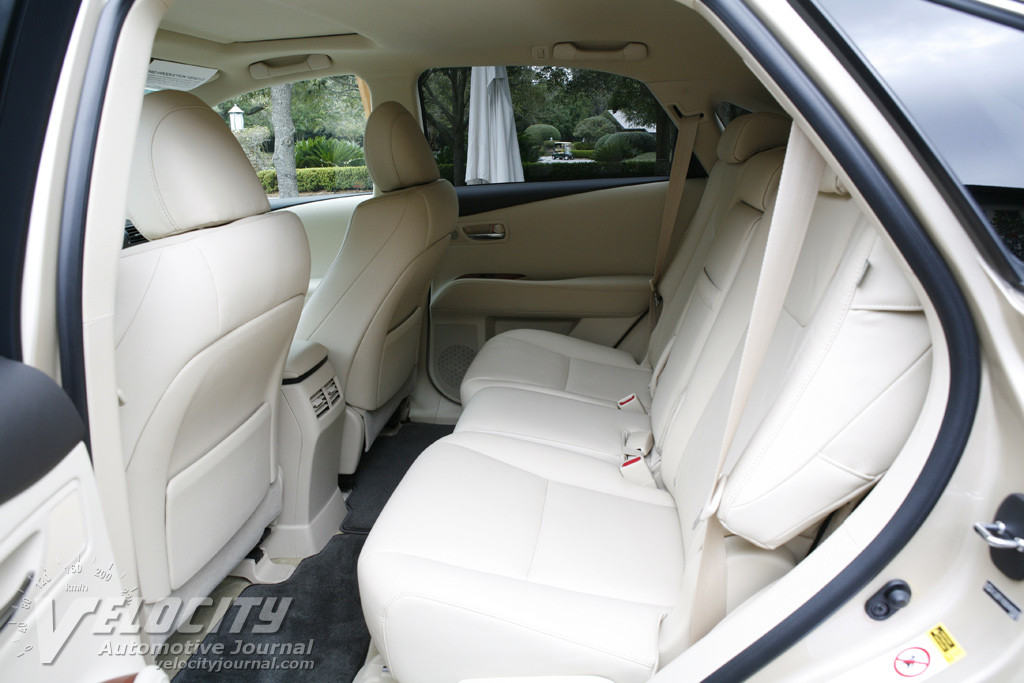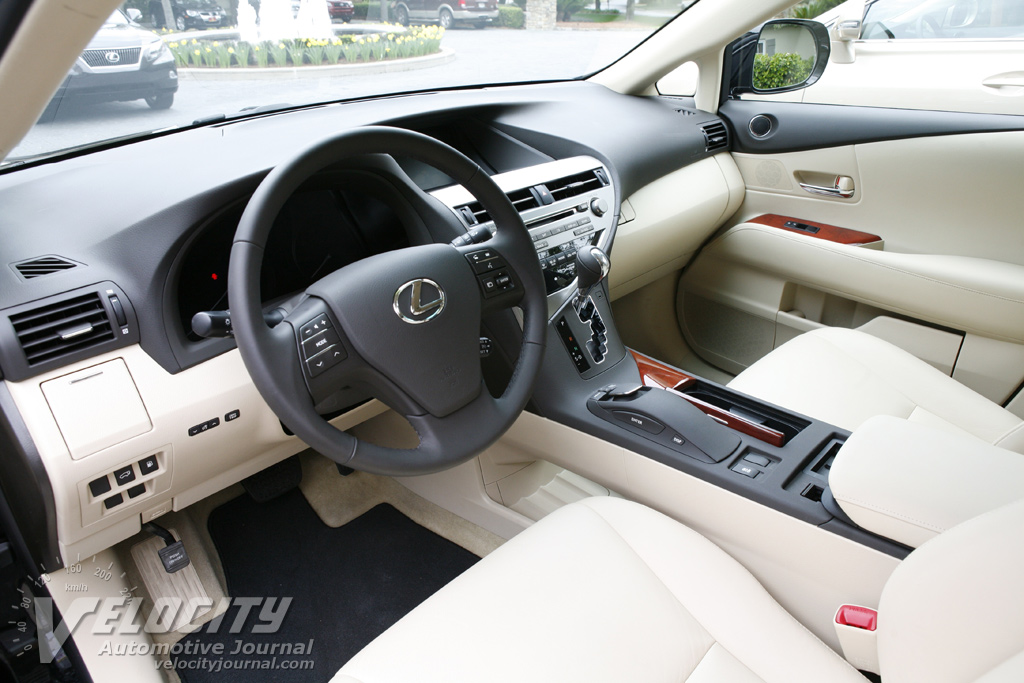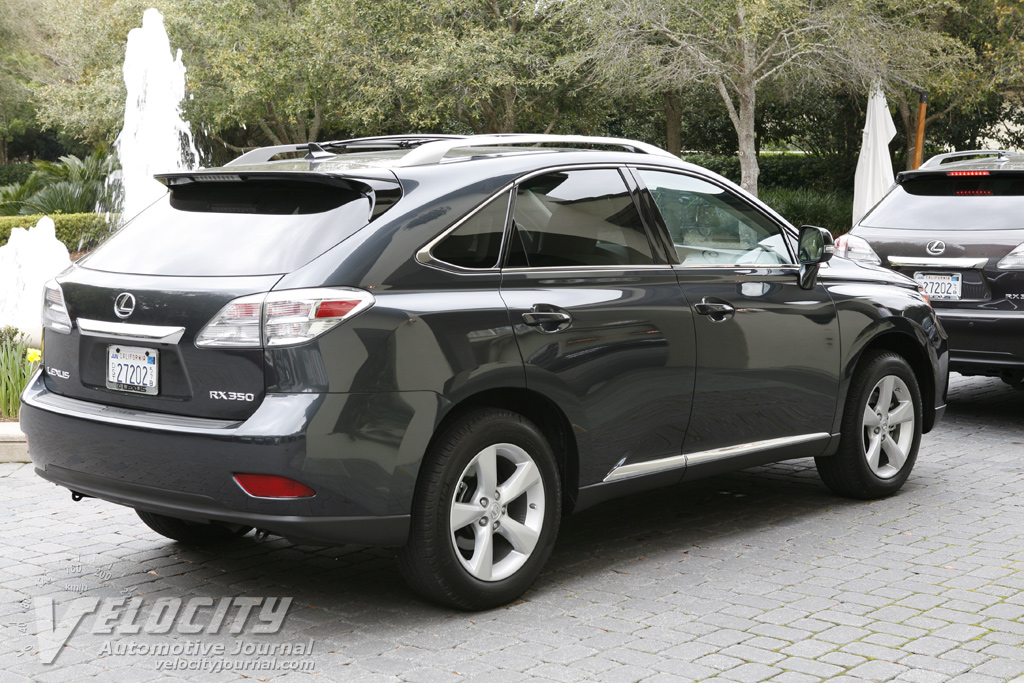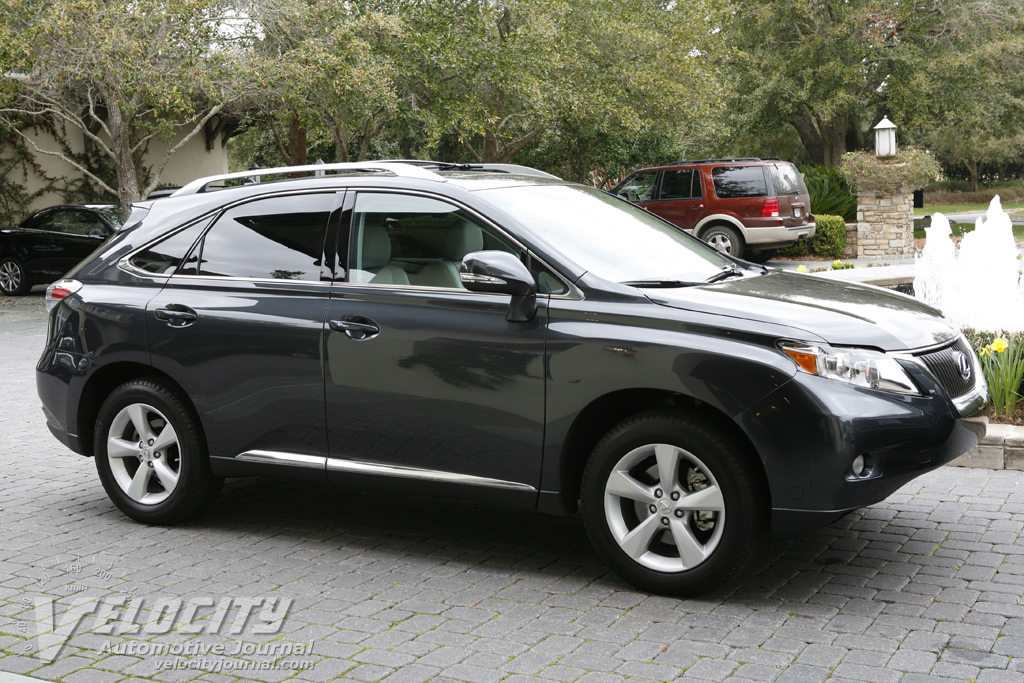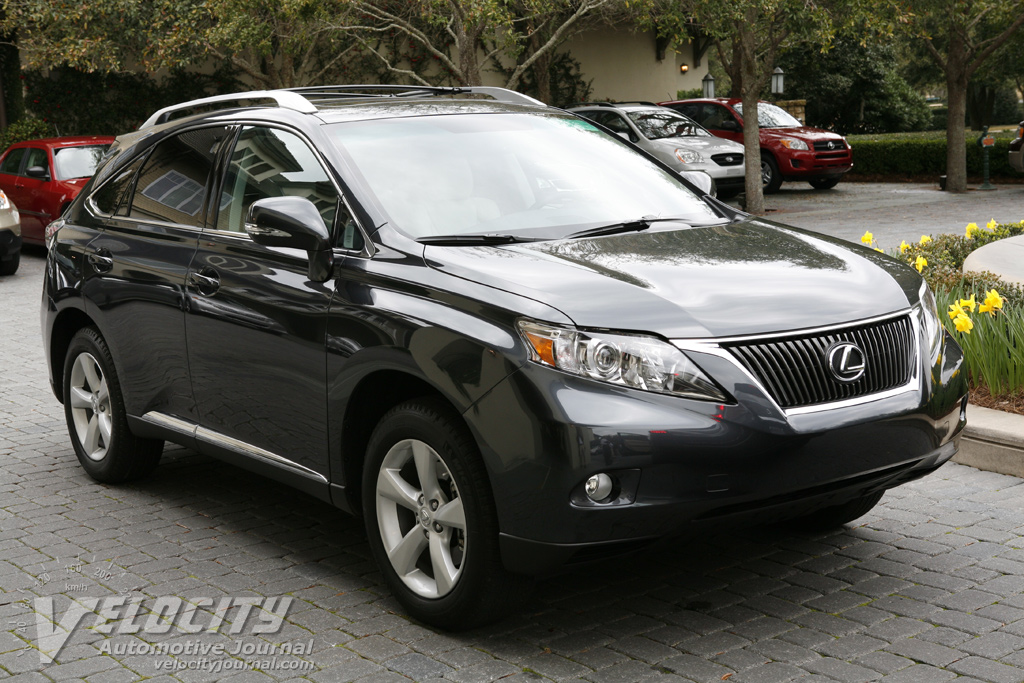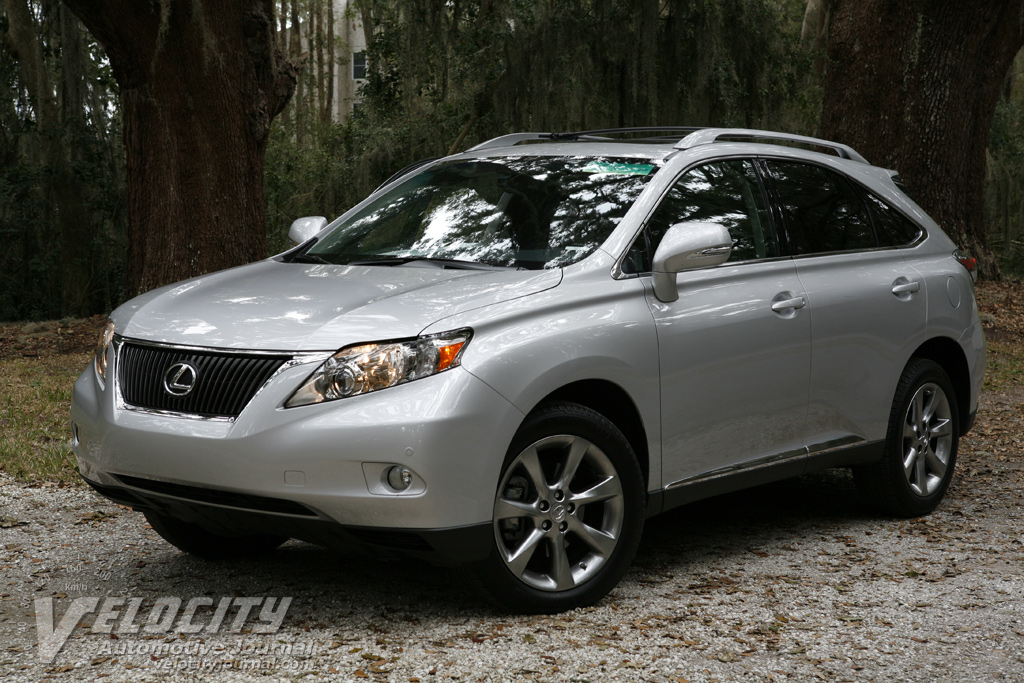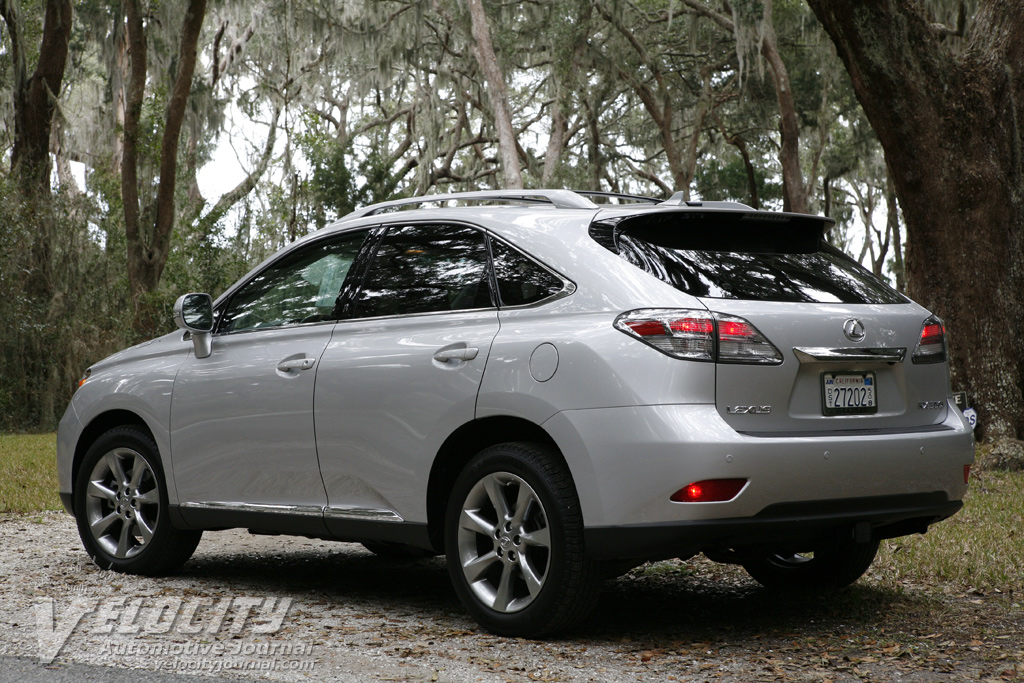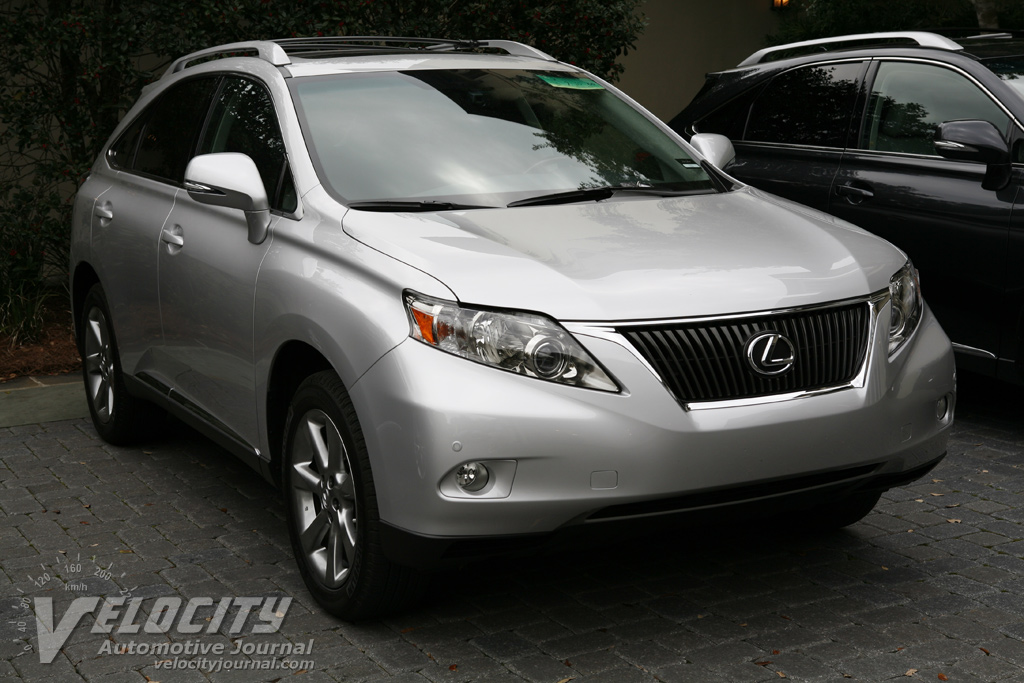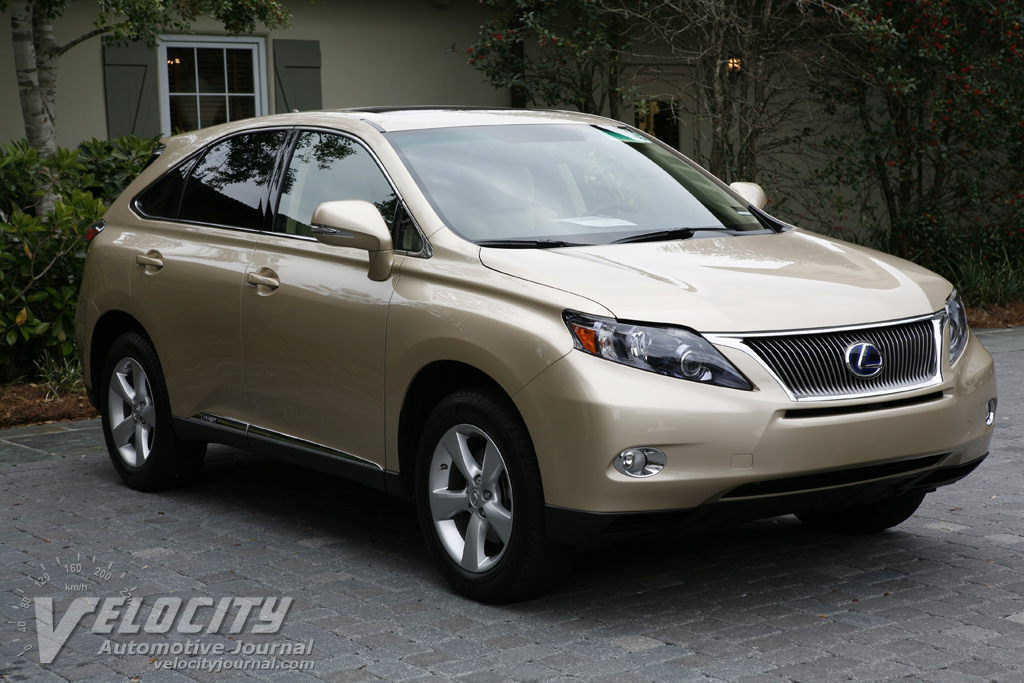2010 Lexus RX
02/18/2009
Shahed Hussain
Since its introduction in 1998 as the RX300, Lexus has steadily refined its best seller to adapt to customer desires. The 2010 RX350 and 450h are the result of the Lexus philosophy of constant improvement. Current customers will instantly recognize the 2010 RX, although there are many subtle styling differences from the outgoing model. According to Lexus, the RX350/450h have the same target demographic as the Acura MDX, Mercedes-Benz ML350, BMW X5 xDrive30i, and Lincoln MKX. Of these SUVs, the Acura and Lincoln are closest to RX in design and execution. We would also add alternative such as the Nissan Murano and the larger Buick Enclave, both of which are priced similarly to the RX350.
The 2010 RX lineup begins with the front-wheel drive RX350 ($36,800), adding all-wheel drive raises the sticker to $38,200. Pricing for the hybrid RX450h will be available in summer 2009, although Lexus expects to keep it close to the current 2008 400h FWD ($42,080). Delivery, processing, and handling for all models is $825.
As the entry-level SUV is the Lexus lineup, the RX has to appeal to cost-conscious customers, yet provide the luxury and technology that affluent buyers expect. Naturally, the list of available options is rather extensive; a few examples include LED headlights (RX450h only), a 330-watt Mark Levinson 7.1-channel audio system with 15 speakers, XM NavTraffic & NavWeather, dual-screen rear seat entertainment system, hard disk-based navigation system, bi-Xenon HID headlights with Intelligent Adaptive Front Lighting System, automatic high beams, Wide-View Side Monitor System (exterior mirror-mounted cameras), and head-up display.
Lexus designed an understated interior for the RX; polished walnut wood veneers and subtle chrome accents are on the dashboard, center console, and door panels. The optional Comfort or Premium Package includes semi-aniline leather upholstery; the standard cloth seats are available in ivory or black. Both front seats have 10-way power adjustments and lumbar support. The driver's seat is comfortable, but the flat thigh bolsters provide minimal lateral support. Rear seat passengers benefit from ample legroom, although long-legged occupants may find thigh support lacking.
The crisply illuminated gauge cluster is backlit by the first automotive OLED (organic light-emitting diode) system. A hybrid system indicator gauge replaces the tachometer on the RX450h. The leather-wrapped steering wheel includes controls for audio, phone, trip computer, and various vehicle systems. Conveniently located to the left of the steering wheel are buttons for the fuel door and power liftgate. The optional navigation system includes the remote touch controller to change settings on the LCD multi-function screen; the palm-sized controller operates like a joystick, and is very easy to use.
Powertrain updates to the RX350 include a new 6-speed automatic, which replaced the previous 5-speed unit. The 2GR-FE 3.5L V-6 is now rated for 275-bhp @ 6,200 RPM; torque is 256 lb.-ft. from 2,300 to 6,100 RPM, thanks to dual VVT-i (Variable Valve Timing with intelligence) and ACIS actuator (Acoustic Control Induction System). All-wheel drive models are equipped with a new electronically controlled Active Torque Control system with a clutch-type coupling that varies front/rear torque split from 100:0 to 50:50, based on driving and road conditions. An AWD Lock mode is designed to improve traction on sand or rocky trails at speeds up to 25 MPH. Lexus claims the RX350 AWD sprints from 0-60 MPH in 7.5 seconds; the FWD model is slightly faster at 7.4 seconds. Top speed for all RX models is limited to 112 MPH. According to the EPA, the RX350 FWD achieves 18/25 MPG (city/hwy.); the AWD model loses one MPG on the highway.
The hybrid RX450h differs significantly from the RX350 in its driveline design and execution. The 2GR-FXE 3.5L V-6 uses the Atkinson Cycle and cooled EGR (exhaust gas recirculation) to improve efficiency. An electronically controlled CVT (continuously variable transmission), coupled to a planetary gearset transmits power to the front or all four wheels. Instead of a conventional propshaft and differential, Lexus integrates an electric motor/generator near the rear axle to drive the wheels when the front wheels start to slip, and under full throttle acceleration. Substituting an electric motor eliminates the driveline friction of a propshaft to reduce fuel consumption. A motor/generator at the front axle also supplements the gasoline engine during acceleration. During deceleration, the electric motors reverse roles to become generators that recharge the 288V battery pack situated under the rear seats. The combined hybrid drivetrain produces 295-bhp; the gasoline engine alone cranks out 245-bhp @ 6,000 RPM and 234 lb.-ft. @ 4,800 RPM. The rear electric motor/generator is rated at 123kW/335 lb.-ft., while the front motor/generator output is 50kW/139 lb.-ft. The hybrid drivetrain yields 28/27 MPG (city/hwy.) in the RX450h FWD; highway fuel economy drops one MPG with the AWD drivetrain.
Other enhancements to the RX450h to minimize fuel consumption include an ECO mode that reduces throttle response and cuts air conditioning load on the engine. Lexus also engineered the RX450h for pure electric drive at low speeds. The ECO mode is selectable via buttons on the steering wheel; a green ECO light on the instrument panel confirms that the RX450h is in its most fuel efficient mode. In normal driving with the ECO mode it was difficult to sense any significant differences in how the RX450h drove, so unless maximum throttle response or A/C cooling is needed, the ECO mode should extract maximum fuel efficiency from the hybrid drivetrain.
Lexus retained MacPherson struts for the front suspension of the RX. At the rear, a new double wishbone design is partly responsible for the improved handling; the rear suspension endows the RX with a wider load floor than with the previous MacPherson strut layout. Brakes consist of 12.9-inch diameter ventilated discs in front, and 12.2-inch diameter discs at the rear; 4-channel/4-sensor ABS is standard. Alloy wheels with 235/60R18 tires are standard; 19-inch wheels with 235/55VR19 tires are optional. A new Sports Package includes unique 19-inch alloy wheels, retuned coil springs, plus VDIM (Vehicle Dynamics Integrated Management).
We drove both RX350 AWD and RX450h AWD pre-production models during the press preview. On the table-flat roads near Brunswick, Georgia, the RX was quiet, refined, and solid. The electrically-assisted rack-and-pinion steering provides above average feedback; combined with the relatively firm damping, the RX is surprisingly sporty for a luxury-oriented SUV. Although the 3.5L V-6 is unobtrusive at cruise, full throttle acceleration reveals noticeable induction noise that penetrates the otherwise silent cabin. Wind noise is nearly nonexistent, but the all-season Michelins were audible at 70 MPH on the highway. Nonetheless, the RX retains luxury car levels of refinement matched by few competitors in its class.
The 2010 RX350 and 450h continue the Lexus philosophy of incremental enhancements to nearly every major aspect of its best-selling SUV. Current owners are sure to be pleased with the host of added luxury and technology options to tailor the RX to their needs. As other manufacturers have entered the luxury crossover SUV segment, the competition has become more heated than ever, but the new RX shows yet again why Lexus remains the standard by which others are judged.

